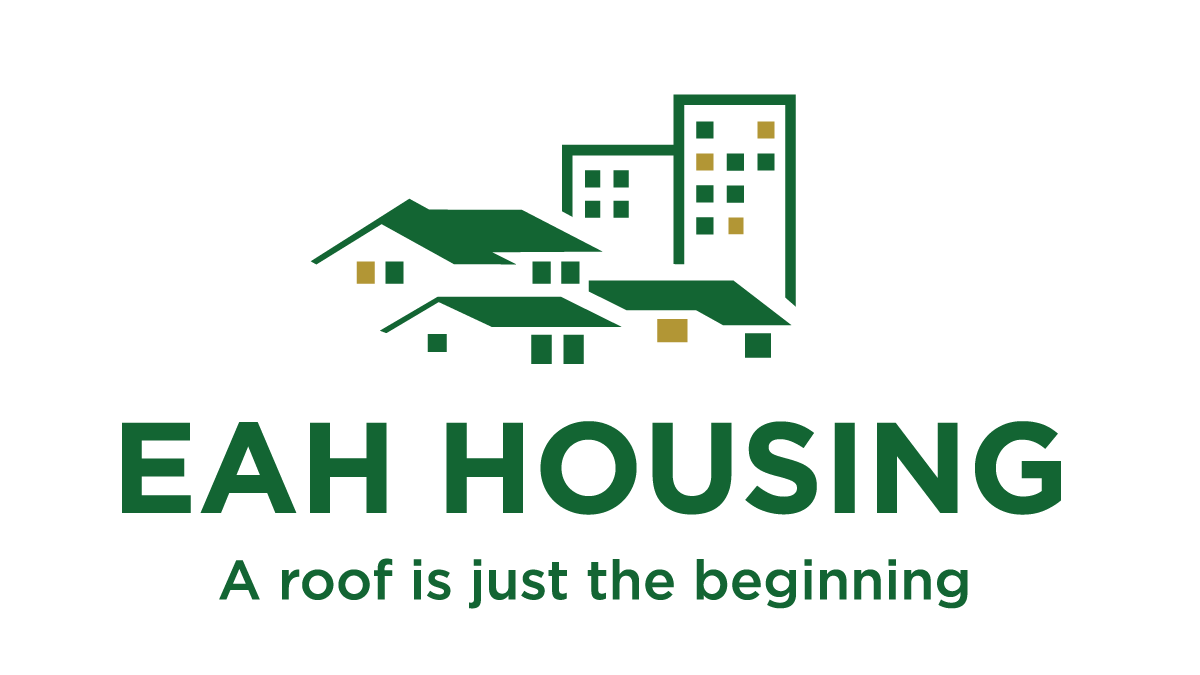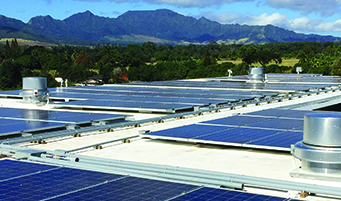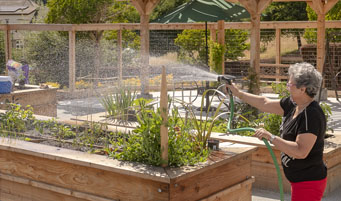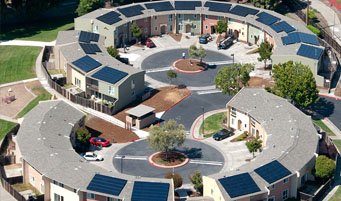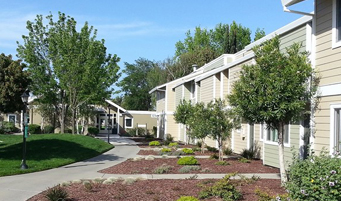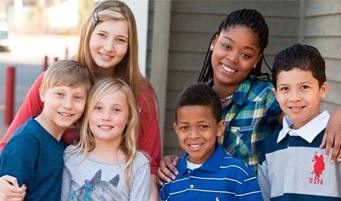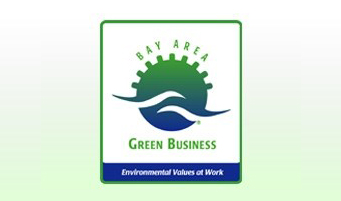The Building Sustainable Communities Initiative is a company-wide program at EAH Housing designed to fully integrate and institutionalize best practices in green design and ensure that day to day operations reflect a commitment to sustainability.
2009
- In 2009, EAH Housing formalizes its existing green programs into the Building Sustainable Communities Initiative (BSCI), with the goals of streamlining green upgrades and creating guidelines to ensure operations and new development are in line with the latest sustainable practices.
- Energy audits on nearly three-quarters of the EAH portfolio (72%) are completed by 2009.
- In the latter half of 2009, EAH moves forward with a series of Power Purchase Agreements to install photovoltaic solar electric systems, using state MASH rebates for 22 properties. In addition EAH completes solar installations for 9 new construction and rehabilitation projects and has 10 pending solar installations in pre-development.
2010
- In 2010, 21 properties receive green rehabilitations, including the installation of Energy Star appliances, high efficiency water heaters, dual pane windows, native plant landscaping, and other energy efficiency measures.
- In 2010, the California Sustainability Alliance takes notice of the many green accomplishments at EAH Housing and features the organization at their annual California Sustainability Showcase Awards. Each year, the Alliance recognizes organizations that are leading the way to a sustainable future for the state. The March 2011 awards showcase presents the EAH green programs to a statewide audience.
- In 2010 EAH Housing becomes certified as a Bay Area Green Business by the Association of Bay Area Governments, joining over 2,000 other businesses and public agencies in the San Francisco Bay Area that have met the Association’s stringent standards of environmental performance.
- EAH is awarded its first ground-up LEED certification through the US Green Building Council in 2010.
2011
- In 2011, EAH partners with the renowned Lawrence Berkeley National Laboratory for an important national experiment. At the EAH community Fountain West in Fresno, CA, scientists from the Laboratory monitor the rehabilitation of apartments, tracking changes in air quality and energy consumption. The results of this study are utilized by HUD.
- 2011 brings about resident and staff training though the support of Enterprise Community Partners and Local Initiatives Support Corporation (LISC).
- In just two years, over half of the EAH Housing portfolio is retrofitted with new green technologies, and the other half receives energy use audits. These improvements are fully or partially funded through the following programs and entities: Weatherization Assistance Program, Marin Municipal Water District, PG&E Rebate Programs, Hawaii Lights and Hawaii Energy, Marin Community Foundation, Low Income Investment Fund (LIIF) and Contra Costa County.
2012
- Launched in 2011 with the goal of improving energy efficiency in buildings by 20 percent, the White House Better Buildings Challenge (BBC) extends to multifamily apartment homes in 2012 and EAH immediately jumps at the opportunity to join more than 120 other early-adopting organizations.
- In 2012, EAH is awarded a grant to refine its Operations and Maintenance Guidelines to include advanced training for maintenance staff. At that time, EAH also implements a policy to use green cleaning products across the portfolio. In addition, EAH receives funding to complete its internal Product Specifications Guidelines for new development and rehabilitations.
2013
- 2013 brings the opportunity for EAH to receive its first Green Point Rated Rehabilitation certification through Build it Green.
- Enterprise Community Partners helps EAH build capacity and continue resident and staff conservation training with grants in 2012, 2013 and 2014.
- Staff and resident efforts bring attention to the beginning stages of the California drought and our collective need to save water. In 2013, residents participate in a portfolio-wide water conservation slogan contest. The winning slogan “Do your part, be water smart” is promoted in all common area bathrooms, laundry facilities and kitchens of EAH properties and offices.
- At the end of 2013, green retrofits are completed on 40% of EAH communities, helping the organization meet its goals for the Better Buildings Challenge.
- Capacity building efforts in 2013 launch utility data collection and tracking tools: EPA Portfolio Manager and later Wegowise, in 2014.
2014
- In 2013-2014 EAH provides water awareness training for staff at local watersheds. Water decals with “Save Me” written inside a water droplet are distributed to residents to be applied by sinks and faucets.
- In 2014, EAH hosts two Green Fairs at properties in California and Hawaii to train residents on the importance of recycling, conservation and green home products.
- Also in 2014, EAH implements its first bike sharing program at a property in San Francisco, to promote transit-oriented solutions to greenhouse gas emissions.
- In 2014 EAH enters into a contract with a private waste company to divert property recycling from entering landfill.
- EAH 2014 efforts to engage resident youth launch a semester-long Green Team at one of our family properties, culminating in green events and a student-produced video on water conversation.
- EAH is acknowledge by President Obama and the White House in 2014 for its commitment to solar deployment and energy efficiency with 3.1 MW of on-site solar PV installed and a goal of 20 additional projects for nearly 10 MW of solar generation portfolio-wide.
2015
- EAH 2015 efforts continue with a focus on the third year of California’s drought by implementing landscape replacement modules for lawns and other high water plants.
- In 2015, EAH identifies the water rebate programs offered in all counties where we own or manage properties, resulting in the funding of a number of upgrade projects, along with an ongoing pipeline of potential projects.
- Energy efficient solutions are implemented at several EAH properties in 2015, including: apartment LED lights, showerheads, aerators, refrigerators, exterior lighting, and domestic hot water boilers.
2016
- All EAH properties undergo thorough water audits conducted by either the local municipal utility district or maintenance and property management staff, with 100% of the portfolio completed by 2016.
- 3 property landscaping improvements and 3 smart retrofits are completed in 2016: Bradley House, Cecilia Place, Fairfax Vest Pocket, Isabel Cook Homes, Riviera Apartments and Rodeo Gateway. 2 more are in progress: Crescent Park and Kings Valley.
- In May 2016, EAH staff across California and Hawaii participate in a Climate Reality Webinar hosted by Strategic Energy Innovations (SEI), an organization trained by Al Gore’s national Climate Reality Leadership Corps.
- The EAH pilot water conservation contest for staff and residents launches in 2016 at 7 properties, with best practices developed to guide a portfolio-wide rollout in 2017.
2017
- Strategic data tracking in place allows EAH to analyze utility data from baseline to present day and evaluate program outcomes or identify opportunities for improvement.
- Water reports for staff to review cost and consumption patterns and are generated in 2017, starting with the 45 BBC properties, to improve utility budget forecasting.
- Water contest launches to more properties across the portfolio in 2017.
2018
- Marrying healthy communities and StayWell resident services with sustainability
- Sustainable water management system and long term strategy
- Sustainable waste management initiative and outreach
- Other
2022
53 Properties with Solar Photovoltaics
- Reducing 8.3 million lbs. CO2 emissions annually
- Reducing electricity expense $1.25 million annually
- 15 Properties under SOMAH usage consumption program, producing 1.8 Megawatts
11 Properties with Commercial Biolers and 18 with Solar Thermal
- Minimizes natural gas usage consumption
Participant of Department of Engergy Better Building Challenge (BBC)
- Currently 53 BBC sites and preparing to add more for 2023
The EAH Housing Building Sustainable Communities Initiative was launched in 2009 to ensure that sustainable principles are reflected throughout the design, development, and management of EAH communities and corporate operations. Long before the term “Smart Growth” was coined, EAH Housing was building infill affordable housing to facilitate the growth of sustainable communities, and to provide a stable foundation for our residents to build their futures.
Phase II, Saving Through Sustainability, incorporated efforts to improve data collection and analysis systems for utility and consumption tracking in partnership with EPA Portfolio Manager and the U.S. Better Buildings Challenge.
Currently, EAH Housing is even more acutely focused on mitigating the environmental challenges that local and global communities are facing. Each day, this Initiative continues to benefit the well-being of over 25,000 EAH residents by improving the health and safety of their homes, increasing resident and staff engagement in conservation, and reducing our organizational impact on the environment—creating a healthier planet for us all.
The Building Sustainable Communities Initiative incorporates the EAH Housing dedication to the three “e’s” of sustainability:
Environmental Quality, as we build “green” to the highest standards possible and appropriate for each community.
Economic Integrity, as we are committed to and invested in strengthening the economic vitality and resilience of communities.
Social Equity, as affordable housing provides opportunities to the families and seniors who need them most.
